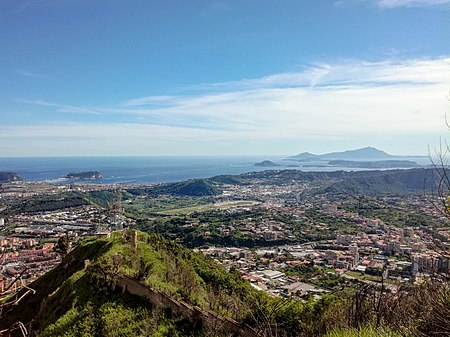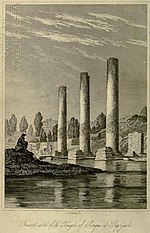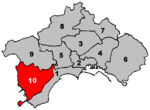Phlegraean Fields

The Phlegraean Fields (Italian: Campi Flegrei [ˈkampi fleˈɡrɛi]; Neapolitan: Campe Flegree, from Greek φλέγω phlego, "to burn") is a large volcano situated to the west of Naples, Italy. It was declared a regional park in 2003. The area of the caldera consists of 24 craters and volcanic edifices; most of them lie under water. Hydrothermal activity can be observed at Lucrino, Agnano and the town of Pozzuoli. There are also effusive gaseous manifestations in the Solfatara crater, the mythological home of the Roman god of fire, Vulcan. This area is monitored by the Vesuvius Observatory.The area also features bradyseismic phenomena, which are most evident at the Macellum of Pozzuoli (misidentified as a temple of Serapis): bands of boreholes left by marine molluscs on marble columns show that the level of the site in relation to sea level has varied.
Excerpt from the Wikipedia article Phlegraean Fields (License: CC BY-SA 3.0, Authors, Images).Phlegraean Fields
Via Coste d'Agnano,
Geographical coordinates (GPS) Address Nearby Places Show on map
Geographical coordinates (GPS)
| Latitude | Longitude |
|---|---|
| N 40.827 ° | E 14.139 ° |
Address
Vulcano Solfatara
Via Coste d'Agnano
80078 , Rione La Solfatara
Campania, Italy
Open on Google Maps










